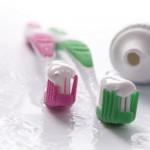
The aim of this review was to investigate the robustness of the observations on the influence of oral hygiene, gingival and periodontal status on the development of bacteraemia from everyday oral activities (B-EOA), analysing its prevalence, duration, magnitude and bacterial diversity.
The authors searched MEDLINE-PubMed, the Cochrane Library and Embase for studies on B-EOA.
They found :-
- 12 articles met the inclusion criteria (seven on toothbrushing, one on dental flossing and four on chewing).
- Evaluating the influence of plaque and gingival indicies on prevalence of bacteraemia
- for plaque index the pooled odds ratio was 2.61 (95% CI = 1.45–4.69)
- for gingival indices the pooled odds ratio was 2.77 (95% CI = 1.50–5.11)
- None of five studies on bacteraemia following dental flossing and chewing revealed a statistically significant association between oral hygiene, gingival or periodontal status and the development of bacteraemia.
The authors concluded:-
Meta-analysis showed that plaque accumulation and gingival inflammation scores significantly increased the prevalence of bacteraemia following toothbrushing. However, systematic review showed no relationship between oral hygiene, gingival and periodontal status and the development of B-chewing, and there is no evidence that gingival and periodontal health status affects B-flossing.

[…] Dental Elf 10th May 2011 – Bacteraemia due to everyday oral activities. […]
[…] Dental Elf 5th Oct 2011 – Bacteraemia due to everyday oral activities […]